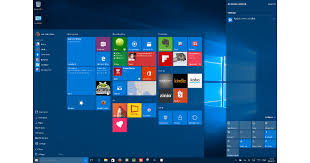First, it’s best to understand what the Windows Modules Installer Worker is, a Windows Update service that detects new updates online and installs the new update automatically on your computer. In general, this service will run in the background while checking for updates. It will not take any of your system resources unnecessarily if it does not work.
Once all updates have been completed, TiWorker.exe will provide all your computer resources. But sometimes in Windows versions of 8.1 or higher, especially in Windows 10, the service can use CPU, RAM or disk significantly. You may find that the Windows Install module works consistently with very high CPU utilization, which freezes all other application process for the system. CPU occupies more than 90%. This causes slow system performance. Even if Windows Update is not running, TiWorker blocks all system resources and makes them unusable.
Today’s article gives you some solutions that will help you diagnose or troubleshoot Windows Modules Installer Worker to correct the problem.
Solution #1: Search for Windows Update Manually- Windows Tips
The first part of dealing with the Windows Modules Installer worker problem is to start your system update manually instead of relying on this specific service. This low usage of this service will definitely free up the CPU and RAM from some additional charges.
To check for updates in Window 8, 8.1, and 10, follow the step instructions below:
Step 1. Use “Win + R” to bring up the “Run” search panel.
Step 2. Enter “wuapp.exe” in the search field and click “OK” to continue.
Step 3. Now on the Windows Update page, go to the “Check for updates” option from the left side panel.
Step 4. Install the displayed updates available and restart your computer to apply them recently.
Solution #2: Delete Software Distribution Folder
The Software Distribution folder is the Windows Update folder. All updates that are downloaded from Windows are stored here. Now that one of these files is damaged or damaged, Windows Update will stop working. This will block Windows features and other updates or improvements that in turn will precede other problems, ie, the problem of using a high-working WMI CPU is one of them. Therefore, deleting the Software Distribution folder that holds damaged files, if any, is a viable solution.
Step 1. Use “Win + R” to bring up the “Run” search box.
Step 2. Type “services.msc” and press “Enter”.
Step 3. Locate “Windows service” windows, search for “Windows update” and then exit.
Step 4. Now follow the C: \ Windows path and look for the “SoftwareDistribution” folder. Once found, delete the entire folder.
Step 5. Restart your computer, check for updates manually as described earlier, and install them if any.
Step 6. Restart the computer again after you install the new update installations.
Solution #3: Try Running Windows Update and Troubleshooter
As recommended by Windows, the Windows Update Troubleshooter will help you diagnose problems with Windows updates more easily than ever before.
To get started, follow the steps below:
Step 1. Press the “Win + X” keys together to open Control Panel.
Step 2. Now in the Control Panel window, look for the “Troubleshooting” option.
Step 3. Go to the left side panel and select “View All”.
Step 4. Now click on “Windows Update” from the list of displayed options and open it.
Step 5. Click “Next” and follow the on-screen instructions to fix the problem.
Solution #4: Try Running Windows System Maintenance Troubleshooter
Although Windows always runs the Windows System Maintenance Troubleshooter in the background according to schedules for routine troubleshooting problems. If any problem is detected, it is notified proactively. Now to work around the TiWorker.exe problem, if you need to run the Windows System Maintenance troubleshooter manually, follow the steps below:
Step 1. Go to Control Panel again as stated for a while, and choose the Troubleshoot option again.
Step 2. Then choose “System Maintenance”.
Step 3. Now click the “Next” option and follow the instructions on the screen to use the System Maintenance troubleshooter.
After the issues are resolved and resolved by the Maintenance Troubleshooter, restart the computer.
Hopefully the problem has been solved.
Solution #5: Scan and Fix Corrupted System Files
Most often, corrupted and corrupted files are the real cause of the problem of using high resources. Now here in this section, we will take advantage of the SFC command (scan and repair corrupted system files) at a command prompt to reduce CPU usage.
Step 1. Press “Windows + X” and choose “Command Prompt” with administrator rights.
Step 2. Click Yes in the UAC prompt box.
Step 3. Once the black cmd dialog box appears, enter the following command and press “Enter”:
SFC / SCANNOW
Instantly the scanning process would begin, and once it is completed, reboot your computer.
Now once more check if the TiWorker.exe is still using a lot of system resources.
For More Learn :PC Troubleshooting



